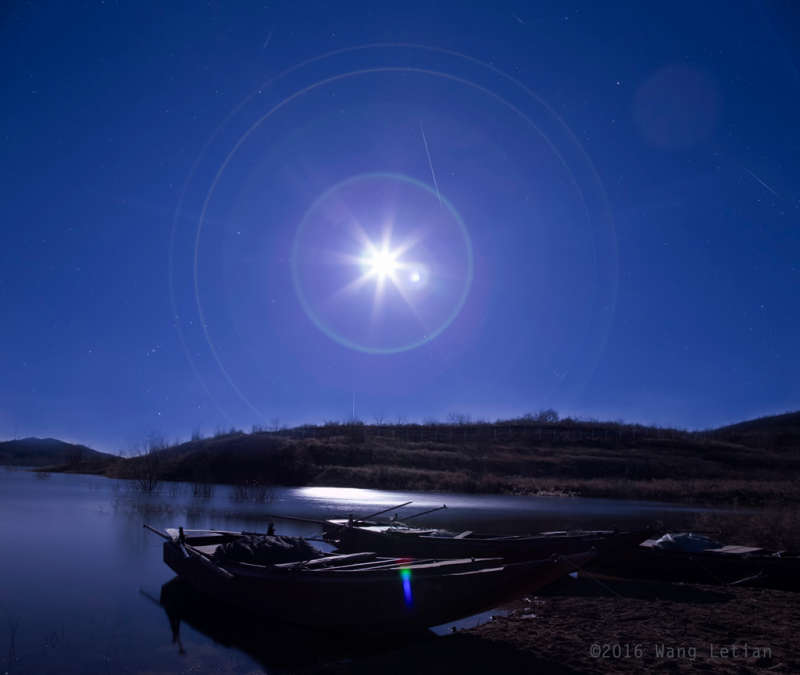
|
Credit & Copyright: Wang, Letian
Explanation:
Geminid
meteors battled supermoonlight in planet Earth's
night skies on December 13/14.
Traveling at 35 kilometers (22 miles)
per second, the bits of dust
from the mysterious asteroid
3200 Phaethon that produce the meteor streaks are
faster than a speeding bullet.
Still, only the brightest were visible during the long night
of 2016's final Perigee Full Moon.
Captured in exposures made over several hours, a few meteors from the
shower's radiant in Gemini can be traced through this composite nightscape.
With stars of Orion near the horizon,
the overexposed lunar disk illuminates still waters of
the Miyun reservoir northeast of Beijing, China.
|
January February March April May June July August September October November December |
| ||||||||||||||||||||||||||||||||||||||||||||||||
NASA Web Site Statements, Warnings, and Disclaimers
NASA Official: Jay Norris. Specific rights apply.
A service of: LHEA at NASA / GSFC
& Michigan Tech. U.
Based on Astronomy Picture
Of the Day
Publications with keywords: meteor shower - full moon
Publications with words: meteor shower - full moon
See also:
